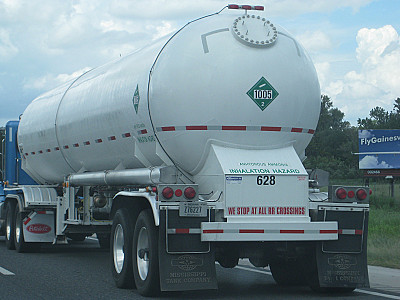Understanding the Opportunities of Insurance in Indonesia
An overview of the current trends within Indonesia's insurance industry.



As of now, ammonia is a primary chemical used as the main base material for the fertilizer industry (70%) as well as other industries (30%). It is crucial for the crop yield which comes from the agriculture sector, and it is made possible by ammonia-based fertilizers and chemicals. Despite the fact that it’s well known that ammonia production results in a carbon dioxide (CO2) footprint, ammonia is considered as one of the solutions to reach net-zero emissions—the big question is how?
One of our ammonia Advisors shared their insights on the ammonia industry, including but not limited to the industry’s history, the demand for ammonia, as well as the future of ammonia uses.
From 2000-2015, world ammonia production increased by 50 Mtpa (million tons per annum), the capacity increased by 85 Mtpa, and the world average capacity utilization decreased from 86% to less than 75% due to new ammonia plants being built. The following five years, he elaborated that ammonia production stopped growing because many plants were closed, thus the capacities were corrected and reduced by more than 20 Mtpa. Mr. DF clarified that the capacity and production growth in 2000-2015 and their stabilization in 2015-2020 are associated with the dynamics of the industry in China, even though the country didn’t participate in ammonia foreign trade nor did it affect world prices. Mr. DF also predicted that by 2025, global ammonia production will rise to 200 Mtpa.
Mr. DF predicted that in the period 2019-2030, Eastern Asia countries such as Japan and China will lead in the field of ammonia demand by an additional 11 Mtpa, followed by Africa (+3.6 Mtpa), Middle East (+2.4 Mtpa), South America (+1.5 Mtpa), and Eurasia (+1 Mtpa). He also explained that in 2021 ammonia are mostly used for fertilizer uses, with only a fifth of the uses are for industrial and non-fertilizer uses. He forecasted that new applications for ammonia will emerge in the mid-2020s and will grow significantly after 2030, and that by 2035 ammonia used for bunkering fuel for international shipping may stand at 24 Mt, which is 9% of total demand. Ammonia as a hydrogen carrier and as an alternative fuel including co-firing in coal- and gas-based power generation may have a similar amount as bunkering fuels. To conclude, by 2035 the percentages of ammonia application are as follows: 62% for fertilizer uses; 21% for industrial and non-fertilizer uses; 9% for bunkering fuel; and 8% for power and hydrogen.
Mr. DF elaborated that in last year, around 190 Mt of ammonia, 75% of Indonesia's ammonia, are used for integrated production such as fertilizers; 15% for domestic market; and 10% for international trading. Mr DF also predicted that by 2050, the international trade of ammonia will increase to around 50% or 238 Mt of the total production, which is then used not only for fertilizers but also for fuel.
Mr. DF shared that ammonia can be used as an attractive solution to the zero-emission challenge. Clean ammonia is available through existing blue and green ammonia, which differ in their production methods; it is also highly versatile with multiple direct applications. Ammonia is an ideal energy carrier with favorable performance across the key performance indicator for clean fuel. Not only that, it has a well-established global infrastructure and storage network.
All three of said ammonia are all actually the same. The difference between the three kinds of ammonia, Mr. DF elaborated, is in how the emission from the product, or CO2, is treated. Gray ammonia comes from fossil feedstock and is processed through a procedure called reforming, and the CO2 resulted from that procedure is released to the environment. Same as gray ammonia, blue ammonia also comes from fossil feedstock and is processed through reforming or gasification; what’s different is that the CO2 is then injected to the earth’s crust through a reservoir or a dry well instead of being released to the atmosphere. Lastly, unlike the first two, green ammonia comes from renewable power instead, and doesn’t produce CO2 at all.
Contact us to explore more about the current trends of the industry and be connected with our Indonesia expert network.
Subscribe to our newsletter, and stay updated on the latest insights to various industries.
About Mr. DF:
Mr. DF is a chemical engineer with a role as a business development analyst at a top ammonia manufacturing company. He is responsible for reviewing some potential markets for developing new businesses in the petrochemical & chemical industry. He mainly researches the LPG, gas processing, syngas process like methanol and ammonia, and CO2 carbon capture project. In the ammonia industry, he handles the business expansion by reviewing the market and supply, looking for production methods, reviewing pricing trends of raw materials and products, conducting financial projections, and reviewing potential competitors. Previously, he worked as a process and production engineer, which made him knowledgeable in manufacturing operations and renewable energy power plants.
We will give you updates of our latest news
An overview of the current trends within Indonesia's insurance industry.

One of Askpert's advisors had the opportunity to share his insights about the expedition industry.

Ammonia is one of the new green energy technologies to curb emissions. Mr. DF, a specialist in the ammonia manufacturing sector, provided us with insights into the expansion of the ammonia industry in Indonesia.

Our advisor shares insights on how ecommerce enablers have been helping brands in Indonesia.
